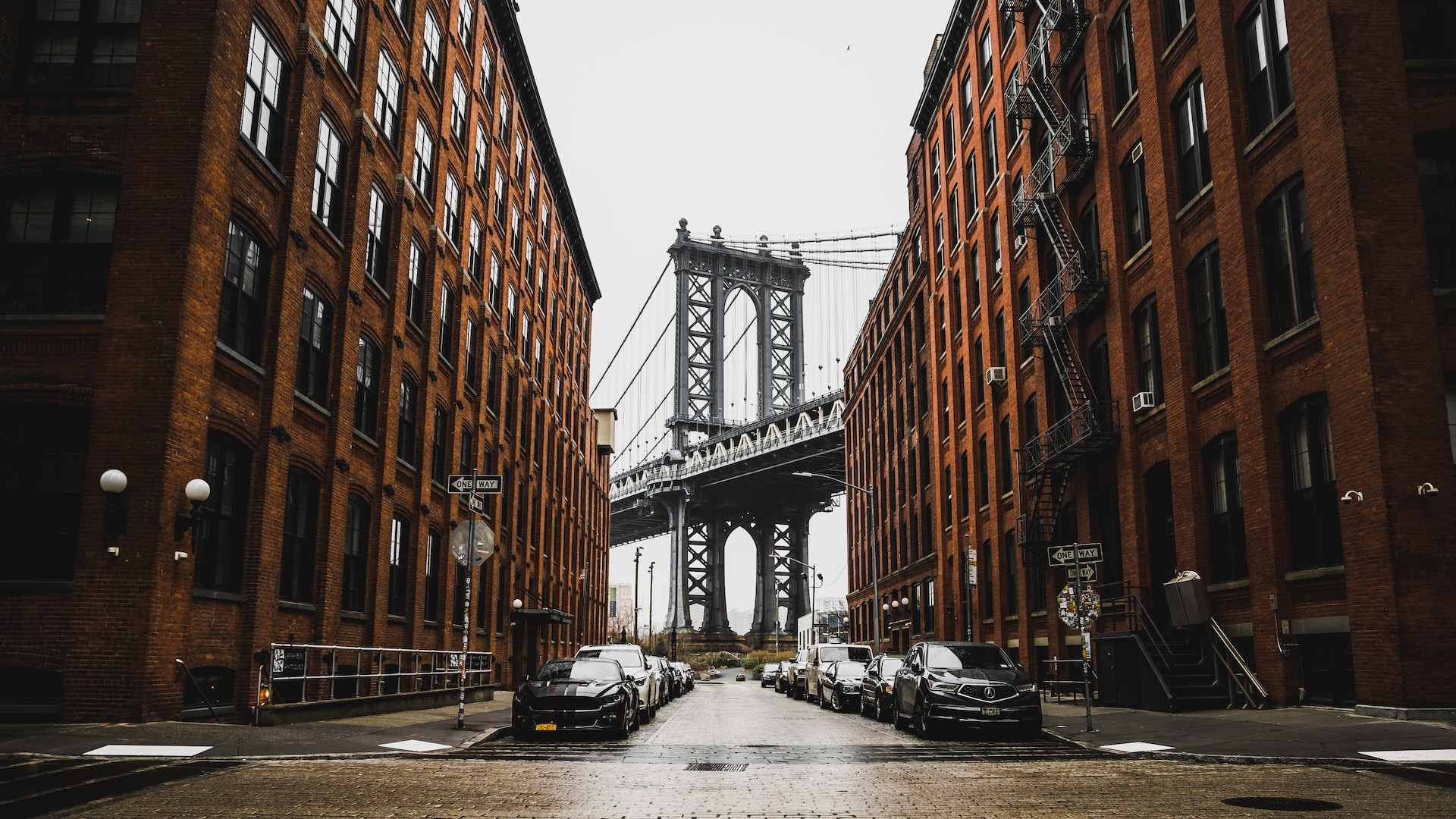One of New York City’s most recognizable features is the Manhattan Bridge. It is a suspended bridge that crosses the East River to link Lower Manhattan and Brooklyn. The bridge is a must-see for both tourists and locals due to its distinctive design and intricate building.
In this guide, we will take a closer look at the history and architecture of the Manhattan Bridge, and explore the various ways to experience and appreciate this marvel of engineering.
History of the Manhattan Bridge
After the Brooklyn Bridge and the Williamsburg Bridge, the Manhattan Bridge was the third bridge to cross the East River when it was completed in 1909. The Manhattan Bridge project was a significant engineering achievement that took more than four years and roughly $31 million to finish. Leon Moisseiff, a pioneer in the field of suspension bridge construction, created the bridge.
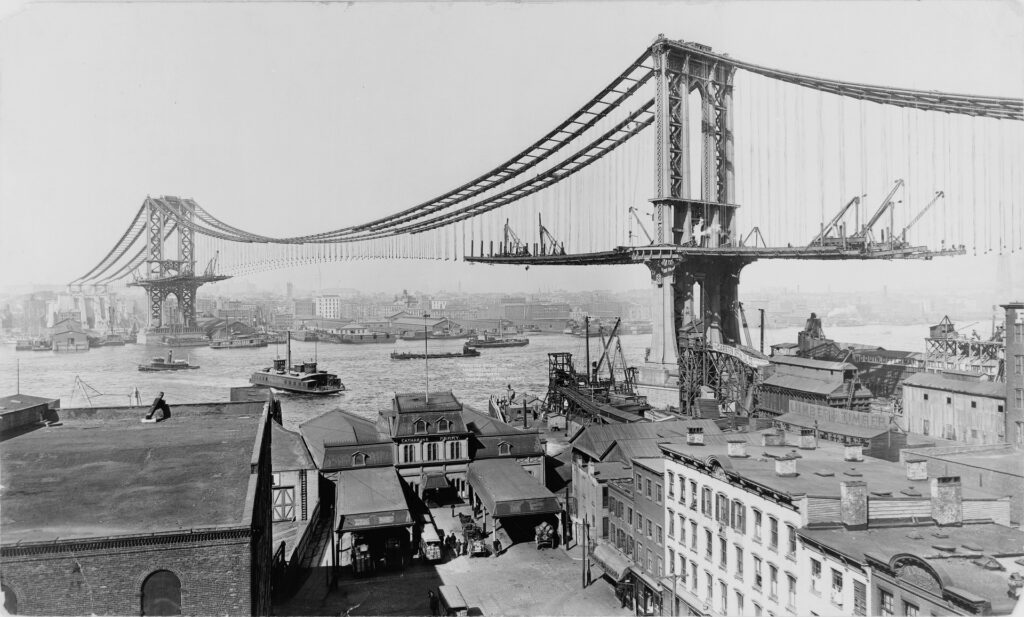
Engineering and Design
The Manhattan Bridge is a suspension bridge that has a primary span of 1,470 feet and a total length of 6,855 feet (2,089 meters). (448 meters). Steel towers that extend 336 feet (102 meters) above the waterway are part of the bridge. Two lower sections of the bridge are also accessible by trains and automobiles. The bridge’s design blends classical and contemporary elements, and it has beautiful decorative elements and intricate details.
Engineering Facts About the Manhattan Bridge
A significant engineering achievement of the period was the building of the bridge. A hybrid cable system, which incorporates wire cables and eyebar chains, was one of the first to be used on the bridge. Compared to earlier suspension bridges, this system enabled the bridge to handle heavier loads. The south tower of the bridge is larger and taller than the north tower, giving the bridge a distinctive asymmetrical form. These we facts about the Manhattan Bridge
Crossing the Bridge on Foot
Walking across the Manhattan Bridge is one of the best ways to enjoy it. On the south side of the bridge, there is a pedestrian path that is reachable from both sides. The Brooklyn Bridge, the East River, and the New York City skyline are all visible from the promenade. It takes about 30 minutes to finish the 1.2 mile (1.9 kilometers) long walk.
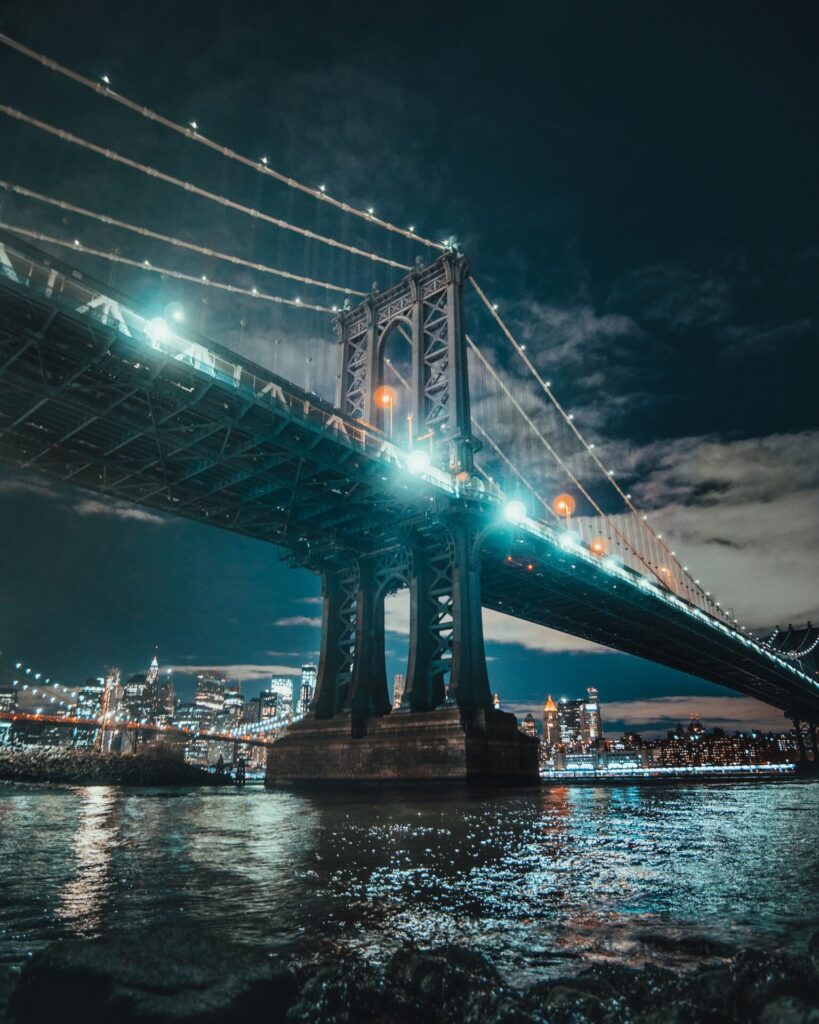
Cycling the Manhattan Bridge
Another well-liked method of seeing the bridge is by bicycle. On the south side of the bridge, there is a designated cycle lane, and cyclists can take in the same breathtaking views as pedestrians. With a gentle incline on the Brooklyn side and a small decline on the Manhattan side, riding across the bridge is fairly simple.
Views from the bridge
Some of the finest views of the New York City skyline can be found on the Manhattan Bridge. The Empire State Building, the Chrysler Building, and One World Trade Center can all be seen from the overpass. The bridge also provides distinctive views of Brooklyn, including the hip DUMBO and Williamsburg districts.
Photographic Advice
There are numerous chances to take beautiful photos at the Manhattan Bridge, which is a well-liked location for photography. The bridge looks its best when photographed at sunrise or dusk when the light is warm and soft. Thousands of LED lights are used to highlight the bridge at night, which gives it a stunning appearance.
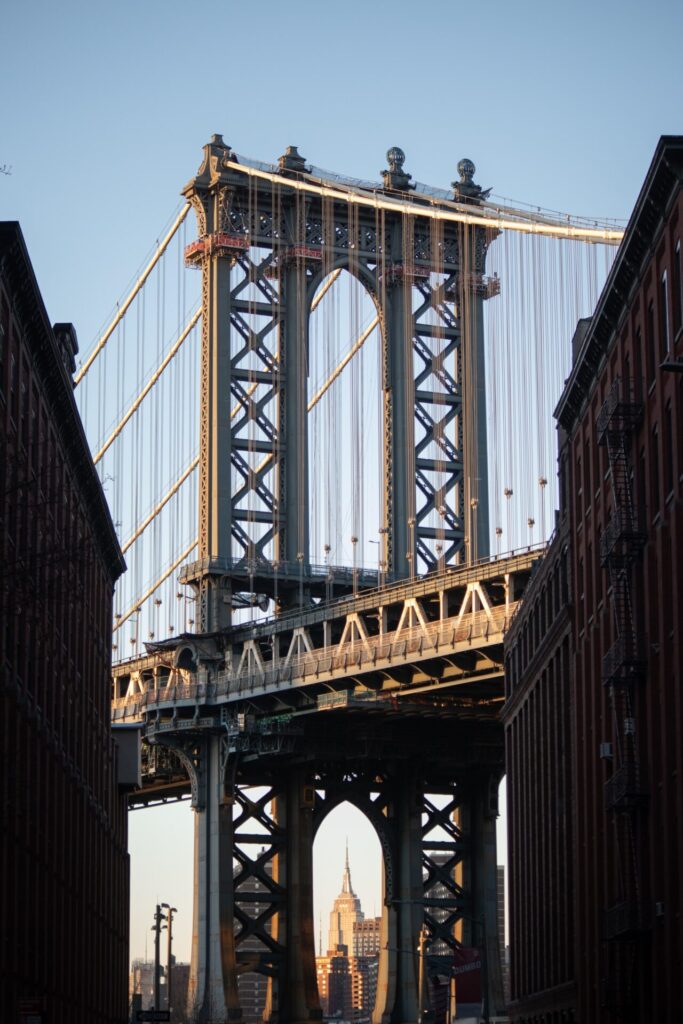
Nearby Attractions
Visitors can continue their journey to neighboring attractions after touring the Manhattan Bridge. The bridge makes it simple to travel to Lower Manhattan and Brooklyn, both of which offer a wide variety of attractions. Visitors can tour Brooklyn’s hip DUMBO (Down Under the Manhattan Bridge Overpass) area, which is renowned for its art galleries, eateries, and shops.
The Brooklyn Bridge Park is also located nearby and offers stunning views of the Manhattan skyline and the East River.
Visitors can pay respects to the victims of the September 11 assaults by visiting the World Trade Center and the 9/11 Memorial and Museum in Lower Manhattan. The New York Stock Exchange and the well-known Charging Bull statue can both be found in the neighboring Financial District.
Read Also: 10 Best Hotels in Manhattan with a View
Food and Drink
Near the Manhattan Bridge, there are numerous places to eat and imbibe. Visitors to Brooklyn can find a wide selection of eateries and cafes in DUMBO and the neighboring communities of Brooklyn Heights and Williamsburg.
Numerous restaurants are available in Lower Manhattan, including the renowned Katz’s Delicatessen and the venerable Fraunces Tavern.
The Brooklyn Bridge Park and the East River Park are both close to the Manhattan Bridge and provide lovely locations to enjoy a dinner with a view for picnickers.
Purchases and souvenirs
Near the Manhattan Bridge, there are numerous opportunities for buying souvenirs. In Brooklyn, the neighboring districts of DUMBO, Williamsburg, and Greenpoint are home to distinctive boutiques and artisanal shops. Shopping choices abound in Lower Manhattan as well, including the renowned Century 21 department store and the Westfield World Trade Center shopping center.
Ideal Season to Visit
The Manhattan Bridge can be visited any time of year, but the milder seasons of spring and autumn are the best. Winter can be chilly and icy, and summer can be hot and muggy. To escape crowds, visitors should think about going during off-peak hours.
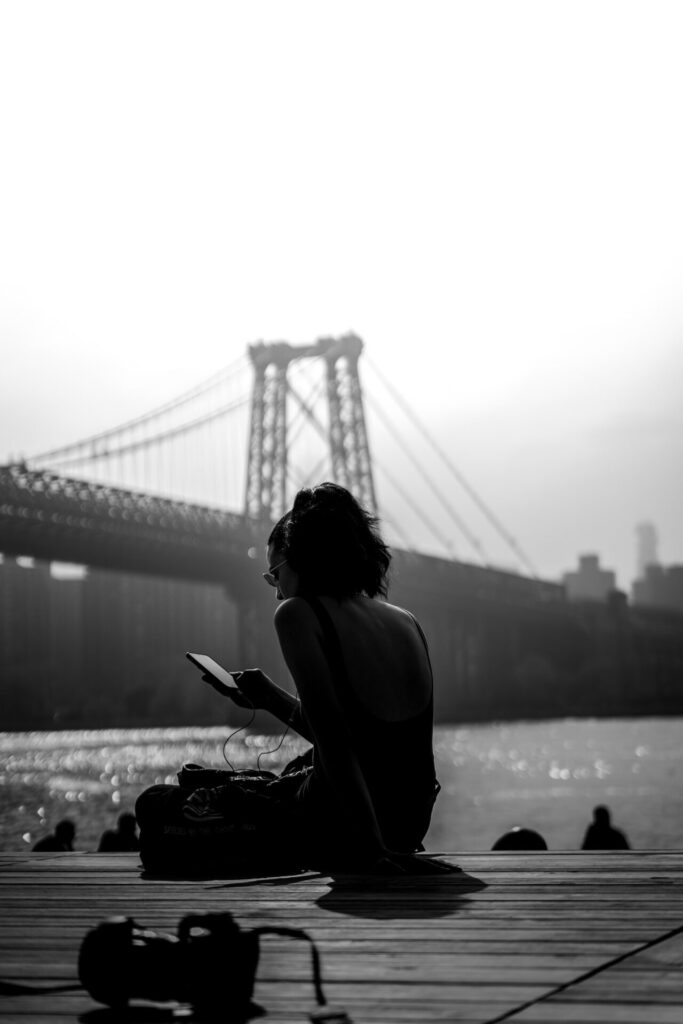
Safety Advice
Despite the fact that the Manhattan Bridge is usually secure, travelers should use caution when exploring the structure. There is a chance of falling items from passing trains, and the pedestrian and bicycle lanes can be congested. Additionally, visitors should be cautious of their surroundings and refrain from cycling or strolling alone at night.
Conclusion
A genuine engineering and architectural wonder and provides breathtaking views of New York City. The bridge can be experienced in many various ways by visitors, such as by cycling, walking, and taking pictures. The Manhattan Bridge is a must-visit location in New York City because of the nearby attractions, dining options, and shopping possibilities.
Location of the Manhattan Bridge
<
h2>FAQs
1. Does the Manhattan Bridge require payment to cross it?
No, there is no fee to cross the Manhattan Bridge.
2. How much time does it take to cross the Manhattan Bridge on foot?
It takes about 30 minutes to cross the Manhattan Bridge, which is about 1.2 miles (1.9 kilometers) long.
3. Can you cycle across the Manhattan Bridge?
Yes, there is a dedicated bike lane on the south side of the Manhattan Bridge.
4. What places around the Manhattan Bridge are worth visiting?
The World Trade Center, the Financial District, and DUMBO are some of the nearby sites.
5. Is it safe to stroll or ride a bike across the Manhattan Bridge?
While the Manhattan Bridge is usually safe to visit, tourists should use caution and pay attention to their surroundings.
